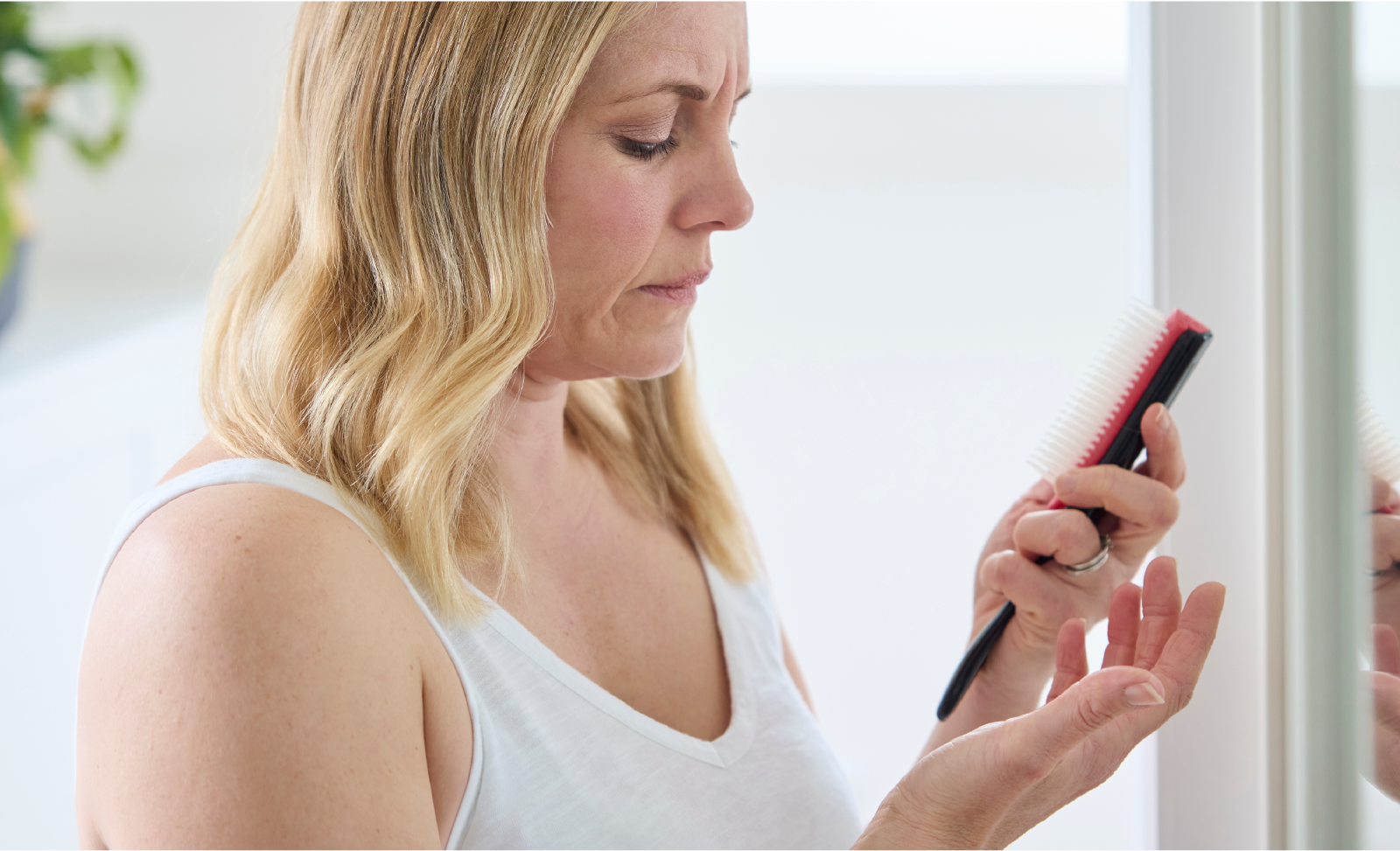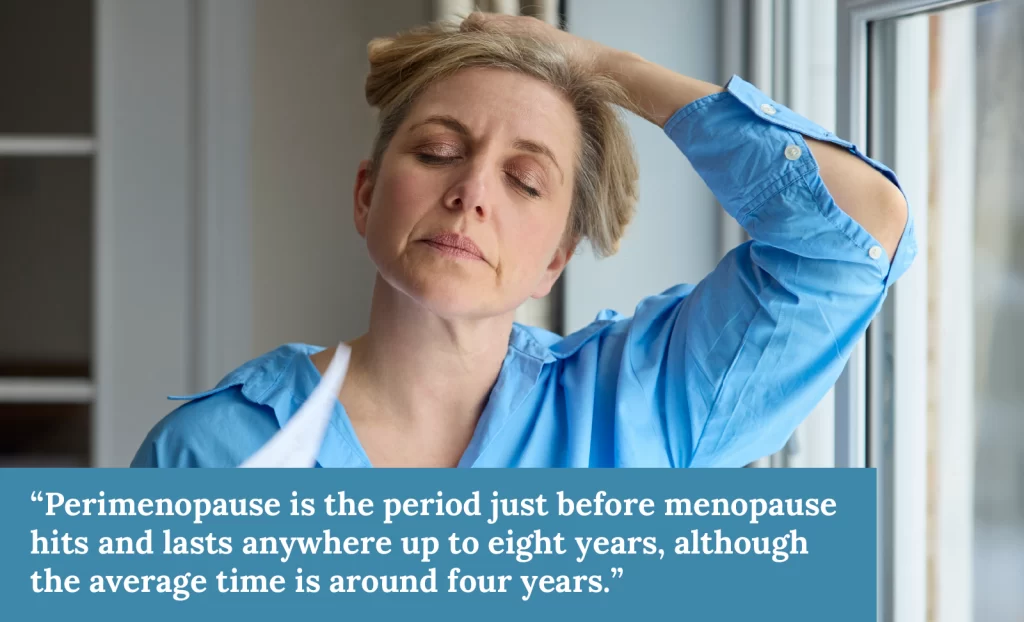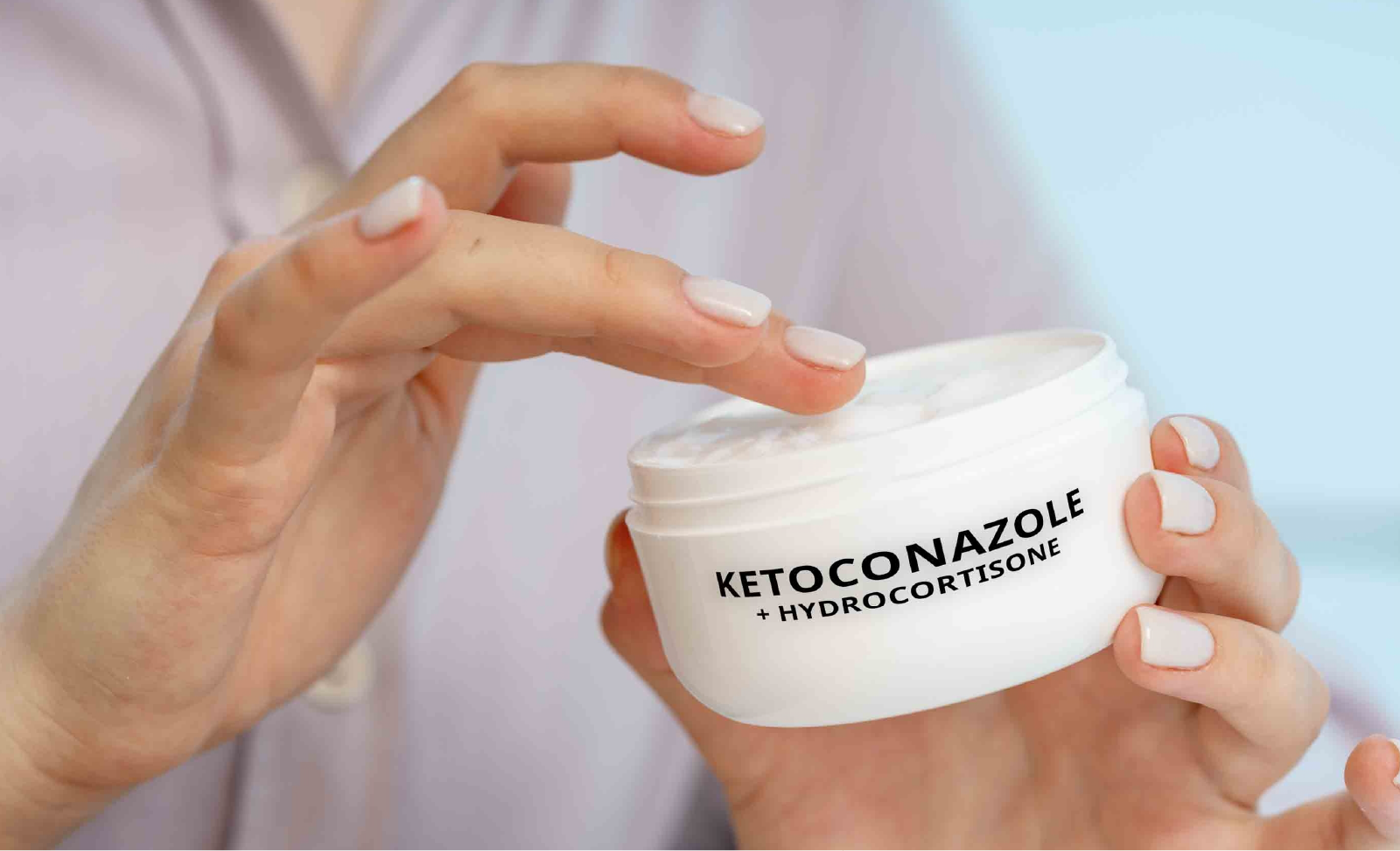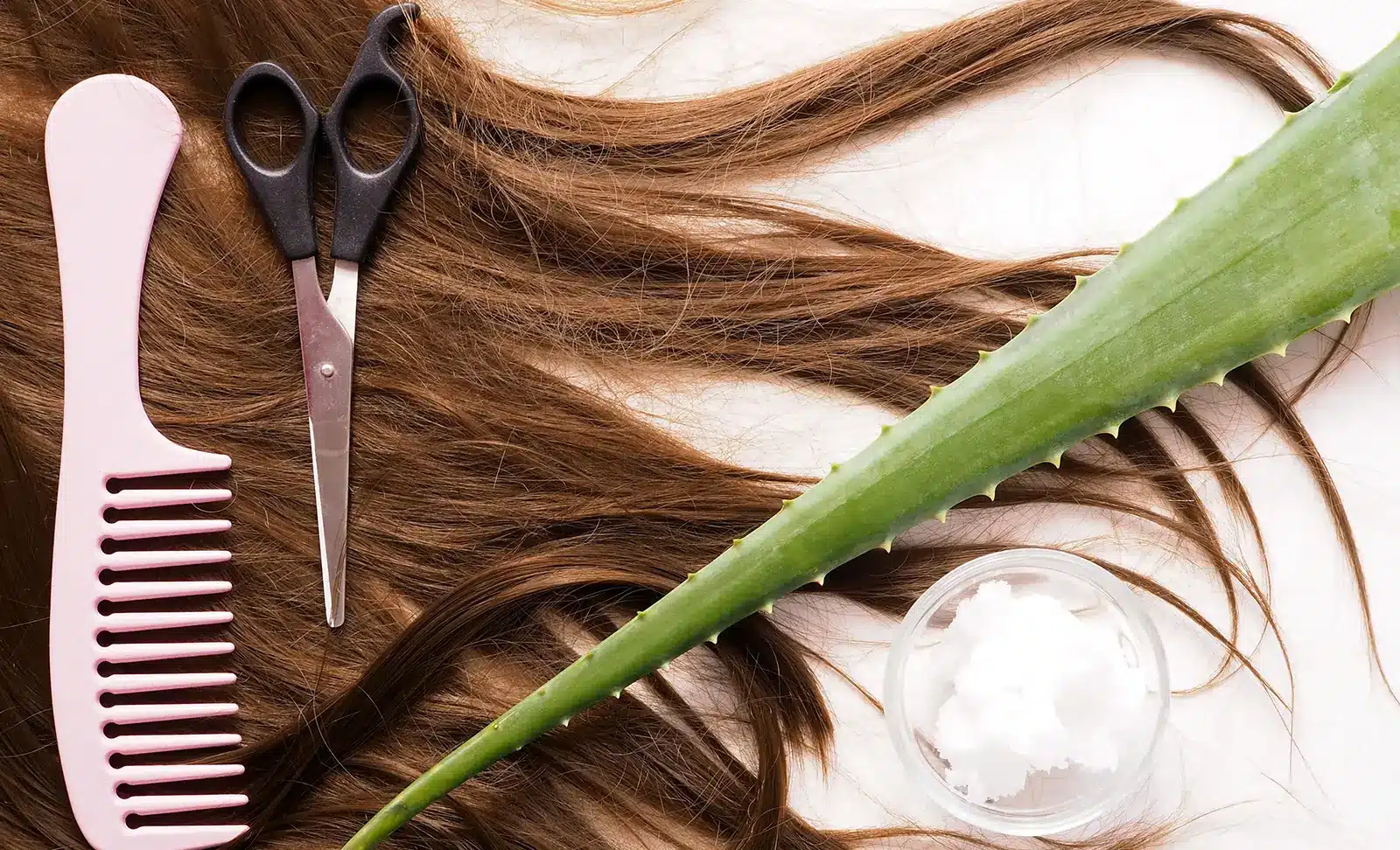Your hair tends to change throughout your life. A lot of this is due to the various styles and haircuts you try out – perhaps in your twenties, you enjoyed a blunt fringe, and in your thirties, you grew your hair out long, and, in your forties, you opted for a more cropped do. It’s not all about choice, though. While visits to the hairdresser can make a big difference, there are some other factors that play into the way your hair looks and feels.
As time goes on, you may experience hair thinning and greying, and put it down to simple ageing. There are often specific causes, though, with one of them being perimenopause.
What is Perimenopause?
Most people have a general grasp of what menopause is, but what about perimenopause?
Perimenopause is the period just before menopause hits and lasts anywhere up to eight years, although the average time is around four years. [1] Of course, every individual is different. It typically begins when a woman is in her mid-40s, but there are many cases of it starting when someone is in their 30s, and even rarer cases of it occurring during a person’s 20s.
During perimenopause, your body undergoes fluctuating hormone levels, which causes a range of symptoms.
Can Perimenopause Affect Your Hair?
Yes, perimenopause can undoubtedly affect your hair, with perimenopause hair loss unfortunately being quite common.
During perimenopause, hormone imbalances occur. During this time, oestrogen levels decline, and as a result of this, male hormones may have more of an effect on the body, causing hair loss. Plus, these hormonal changes can trigger telogen effluvium, a type of hair loss that occurs when the body is under a lot of stress. This disrupts the hair growth cycle, causing the hair to shed more.
As well as hair loss during perimenopause, other hair changes can occur, such as changes to the hair texture. Your hair may feel dryer and more brittle, for example, and this is usually due to a reduction in sebum production.
You may also notice increased hair growth in other areas of the body, such as more facial hair.
Other Symptoms of Perimenopause
Perimenopause hair loss is only part of it; there are several other symptoms associated with this transitional period in a woman’s life. These are the most common side effects.
- Irregular Menstrual Cycle
- Vaginal Dryness
- Hot Flashes
- Night Sweats
- Sleeping Problems
- Mood Changes
- Breast Tenderness
- Memory Problems
- Brain Fog
- A Loss of Libido
These are all difficult to deal with. It’s important to note that different symptoms affect different women, and some symptoms may take a few years to show.
Dealing with Perimenopause
Perimenopause may not be talked about as much as menopause, but that doesn’t mean it should be ignored. Many of these symptoms are unpleasant and can get in the way of a healthy, fulfilling life. The good news is that there are several ways to manage and deal with perimenopause to help alleviate the most unpleasant side effects. We’ll go over some home remedies as well as medical treatments.
Eating a Healthy Diet: It’s important to eat a balanced diet when going through perimenopause. By getting all the nutrients you need, you can better manage the fluctuating hormonal changes and prevent some of the symptoms, including hair loss.
Exercising Regularly: Muscle loss can occur during perimenopause. Plus, mood changes like depression and anxiety can occur. That’s why exercising regularly is so important. It’s best to find an exercise you genuinely enjoy, whether that’s hiking, dancing, swimming, or running.
Establishing a Sleep Routine: Sleep can become more challenging during perimenopause. To deal with this, establish a better sleep routine and schedule. Changes like avoiding caffeine and screen time before bed can be helpful.
Managing Stress: Stress levels can increase during perimenopause, and it’s important to manage them. There are several ways to do this from home, such as doing breathing exercises or meditation. Limiting caffeine and alcohol also helps.
Hormone Therapy: Hormone therapy, also known as HRT, is a type of therapy that helps regulate a person’s hormones. This can be very helpful during perimenopause, when hormones fluctuate significantly.
Medications: Certain medications are helpful for treating perimenopause symptoms, such as antidepressants to manage mood changes and anxiety, anti-seizure medications to reduce hot flashes, and clonidine to reduce hot flashes and night sweats.
Talking Therapies: Perimenopause is not easy for a person to go through alone. Engaging in talking therapies like cognitive behavioural therapy and group therapy can help you feel less alone while also giving you better coping strategies to deal with the process.
Preventing and Treating Perimenopause Hair Loss
Perimenopause and thinning hair unfortunately go hand in hand, but there are ways to treat perimenopause hair loss and prevent the amount of hair loss. A good hair loss treatment can make all of the difference.
Natural Remedies: There are several good natural remedies to use when preventing hair loss, including rosemary oil, pumpkin seed oil, and castor oil.
Minoxidil: Minoxidil is an over-the-counter medication usually sold under the brand name Rogaine. It works topically by boosting blood flow to the scalp, which allows the hair follicles to grow new and healthy hair.
Lifestyle Changes: As mentioned above, lifestyle changes are imperative to managing perimenopause symptoms, including hair loss. Eating right, drinking plenty of water, and managing stress all go a long way toward preventing and managing perimenopause hair loss.
Clinical Treatments: You can receive several effective clinical treatments to encourage new growth. Some of these include microneedling the scalp, PRP (platelet-rich plasma) therapy, and low-level laser therapy. These are non-invasive procedures that work well for many individuals experiencing hair loss.
Camouflage: Some cases of perimenopause hair loss are temporary. In these cases, camouflaging may be enough to get you through. You can use hair pieces, wigs, and even scalp-covering makeup to help your hair appear fuller.
Monitoring Hair Health: It helps to monitor your hair’s health when going through perimenopause. A hair track app can keep you on top of your hair’s changes, including whether you’re experiencing hair loss or growth.
What’s the Difference Between Menopause and Perimenopause?
It’s important to understand the difference between menopause and perimenopause. Perimenopause is the period before menopause, and menopause is when the menstrual cycle stops completely.
Menopause usually starts between the ages of 45 and 55 and is officially reached once a woman has not had a period for at least twelve months in a row. [2] There is a lot of overlap with perimenopause and menopause regarding symptoms – for example, menopause and hair loss are common. Here are some other side effects of menopause:
- Hot Flashes
- Night Sweats
- Mood Changes
- Weight Gain
- Bone Density Loss
- Muscle Aches
- Changes to Skin and Hair
- Vaginal Dryness
- Stopped Periods
- Urinary Problems
If you are struggling with either perimenopause or menopause, it’s important to speak with a medical professional, as there are treatments that can help with the symptoms.
What About Female Pattern Baldness?
Female pattern hair loss – also known as androgenetic alopecia – is the most common cause of hair loss in women. While perimenopause is not the main cause of androgenetic alopecia, this process can trigger female pattern baldness to occur.
This is a genetic type of hair loss, meaning you are more likely to experience it if you have family members who also experience hair loss. In women, the symptoms of androgenetic alopecia include: [3]
- Thinning hair at the crown of the scalp
- Slow, gradual thinning
- Slight hairline recession
- Hair loss that does not progress to complete baldness
Many of the ways to treat perimenopause hair loss can also be used to treat androgenetic alopecia, such as minoxidil. However, there is an additional treatment that many women (and men) find extremely helpful for treating androgenetic alopecia: a hair transplant.
Is a Hair Transplant Worth it?
A hair transplant is a permanent hair restoration surgery that involves taking individual hair follicles from one area of the scalp and placing them in another area – specifically, the area of the scalp where hair loss has occurred.
Hair transplants are typically used for treating androgenetic alopecia in men and women. It is effective, as it uses a person’s own hair to create natural new growth. Plus, you do not have to keep topping up a hair transplant, as the procedure is permanent when used on someone with stabilised hair loss. As such, a hair transplant is undoubtedly worth it for those struggling with self-image due to hair loss and wanting a lifelong solution.
Hair Loss Perimenopause: In Summary
Perimenopause is a period in a woman’s life where many changes happen, and that’s before menopause has even fully begun. One of the most obvious changes is hair loss, as it’s something you’ll see directly in the mirror. The good news is there are plenty of ways to treat hair loss during perimenopause, and even simple changes like eating well and managing stress can make a significant impact.
If you have experienced a lot of hair loss, however, you will want a more efficient and targeted solution. At Harley Street Hair Clinic, we specialise in FUE hair transplants, offering this procedure to both men and women. If you want to learn more about what we do, check out our patients gallery.
Sources:
- https://my.clevelandclinic.org/health/diseases/21608-perimenopause
- https://www.nhs.uk/conditions/menopause/
- https://www.pennmedicine.org/for-patients-and-visitors/patient-information/conditions-treated-a-to-z/female-pattern-baldness





